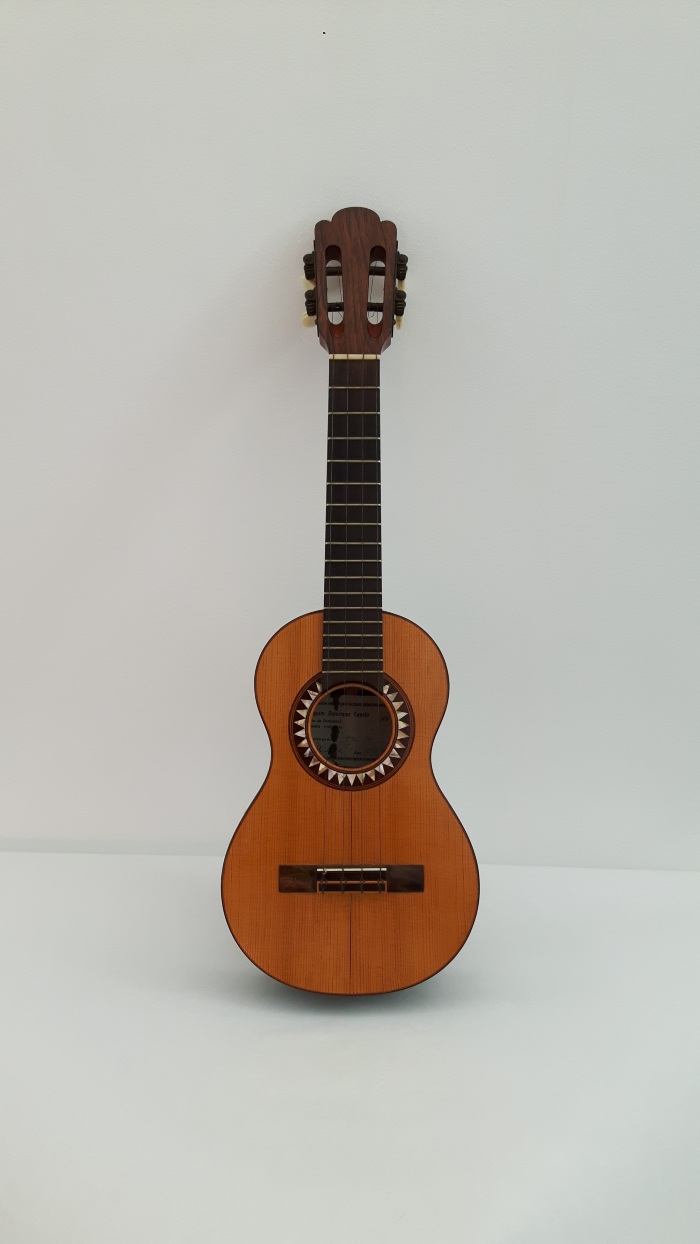Musical instruments ➔ Cavaquinho Lisboa
Identifier:
MusA-808Description
A small, 8-shaped cordophone, the cavaquinho is similar to a strummed guitar, with four steel strings attached to an easel glued to the top and stretched by wooden dorsal tuning pegs (modernly replaced by metal mechanisms called chimes) inserted in a flat, spatula-like head.There are two types of cavaquinho with different construction characteristics: the Minho cavaquinho and the Lisbon cavaquinho. The Minho cavaquinho has a shallow scale at the level of the top, twelve metal frets and an opening in the top known as the ‘boca de raia’. The Lisbon cavaquinho has a protruding fretboard with seventeen frets, extending to the mouth, which has a round shape.
Widely used in northern popular music, the Minho cavaquinho is played ‘rasgado’, a technique facilitated by the fact that the strings are very low, almost flush with the top. The Lisbon cavaquinho, on the other hand, has its strings well above the top, which allows the ‘ponteado’ technique to be practised using the pick or the thumbnail of the right hand.
The origin of the cavaquinho is unknown, but instruments of this type were already being built in the 17th century, as mentioned in the ‘regimento’ for the trade of violeiro - Guimarães, 1719. Naturally, this instrument spread throughout the country and arrived on the island of Madeira, where it was baptised Braguinha or Machete and built with characteristics close to the Lisbon model. This braguinha was taken by emigrants from Madeira to Honolulu (Hawaii) in 1879. The natives baptised the instrument Ukulele (jumping flea), illustrating the movement of the reed, and its rapid popularity led to the appearance of Madeira guitar players on the Hawaiian Islands.
Dimensões
33,5 cm; length of the rope/cordDate
1984 Date manufactureInternal Notes
MusA-808A é o número de inventário da caixa do instrumento.Languages
PortugueseEnglish
Related people
Engenheiro Joaquim Domingos Capela (1943) ()Oficina Joaquim Domingos Capela ()
Related place
São Félix da Marinha (was manufactured at)Related Term
Related Terms
Musical instruments (depicts)UA University cooperation (depicts)
